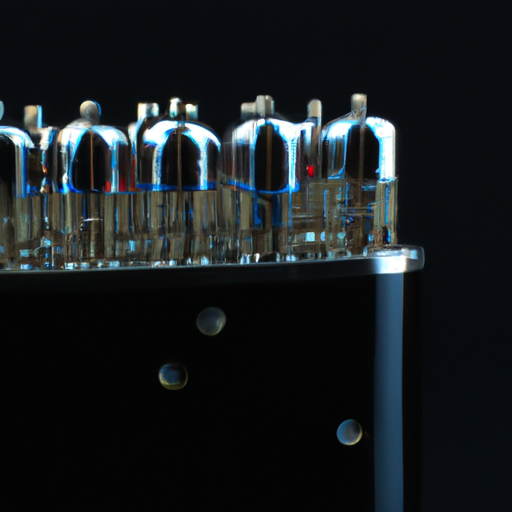
Amplifiers play a crucial role in the world of audio and electronics. They are essential components in a wide range of devices, from musical instruments to home entertainment systems to telecommunications equipment. The role of amplifier products is to increase the amplitude of a signal, making it stronger and more powerful. This allows for clearer and louder sound reproduction, improved signal quality, and better overall performance. In this article, we will explore the advantages of amplifier products and why they are so important in various applications.One of the primary advantages of amplifier products is their ability to boost the strength of a signal. In audio systems, for example, amplifiers are used to increase the volume of sound coming from a source such as a microphone or a musical instrument. This is essential for ensuring that the sound can be heard clearly and loudly, especially in large venues or outdoor settings. Without amplifiers, the sound would be weak and difficult to hear, leading to a poor listening experience for the audience.Amplifiers also play a crucial role in improving the quality of a signal. By boosting the amplitude of the signal, amplifiers can help to reduce noise and distortion, resulting in clearer and more accurate sound reproduction. This is particularly important in professional audio applications, where high-quality sound is essential for recording, mixing, and mastering music. Amplifiers can help to ensure that the audio signal remains clean and faithful to the original source, without any unwanted artifacts or interference.Another advantage of amplifier products is their versatility and flexibility. Amplifiers come in a wide range of types and configurations, from simple single-channel designs to complex multi-channel systems. This allows for a high degree of customization and adaptability, making it easy to find an amplifier that meets the specific needs of a particular application. Whether you need a small, portable amplifier for a personal music player or a powerful, high-fidelity amplifier for a home theater system, there is a wide range of options available to suit your requirements.Amplifiers are also essential for driving speakers and other output devices. Without amplification, the signal from a source such as a microphone or a musical instrument would not be strong enough to power a speaker and produce sound. Amplifiers provide the necessary power and voltage to drive speakers, allowing them to produce sound at the desired volume and intensity. This is crucial for ensuring that the sound can be heard clearly and accurately, without any loss of fidelity or distortion.In addition to their role in audio systems, amplifiers are also used in a wide range of other applications, including telecommunications, instrumentation, and industrial control systems. In telecommunications, amplifiers are used to boost the strength of signals in telephone lines, fiber optic cables, and wireless networks, allowing for clearer and more reliable communication. In instrumentation, amplifiers are used to amplify and process signals from sensors and transducers, enabling precise measurement and control of various parameters. In industrial control systems, amplifiers are used to drive motors, actuators, and other devices, providing the necessary power and control for automated processes.Overall, the role of amplifier products is essential in a wide range of applications, from audio systems to telecommunications to industrial control. Amplifiers provide the necessary power, voltage, and amplification to boost the strength and quality of signals, ensuring clear and accurate sound reproduction, reliable communication, and precise measurement and control. With their versatility, flexibility, and performance, amplifier products are indispensable components in modern electronics and audio systems.
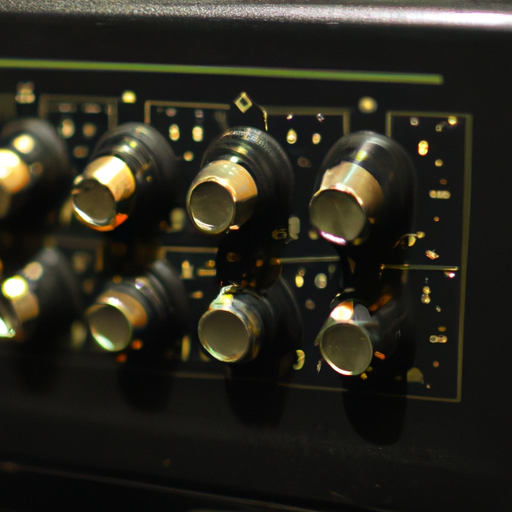
Choosing the right electronic amplifier can be a daunting task, especially with the wide range of options available on the market. Whether you are a musician looking for a guitar amplifier, an audio enthusiast in need of a home stereo amplifier, or an engineer designing a system for a large venue, selecting the right amplifier is crucial to achieving the desired sound quality and performance.In this article, we will discuss the key factors to consider when choosing an electronic amplifier, as well as provide some tips and recommendations to help you make an informed decision.1. Determine your needs and requirementsThe first step in choosing the right amplifier is to determine your specific needs and requirements. Consider the type of audio source you will be amplifying (e.g. musical instruments, microphones, speakers), the size of the venue or space where the amplifier will be used, and the desired sound quality and volume levels.For example, if you are a guitarist looking for a practice amplifier for home use, a small and portable combo amplifier with built-in effects may be sufficient. On the other hand, if you are a professional musician performing in large venues, you may need a powerful and versatile amplifier with multiple channels and inputs.2. Understand the different types of amplifiersThere are several types of electronic amplifiers available, each designed for specific applications and purposes. Some of the most common types of amplifiers include:- Guitar amplifiers: These amplifiers are specifically designed for amplifying the sound of electric guitars. They come in various sizes and configurations, including combo amps (with built-in speakers) and head/cabinet setups (separate amplifier head and speaker cabinet).- Stereo amplifiers: These amplifiers are used to amplify the sound from audio sources such as CD players, turntables, and digital music players. They are typically used in home audio systems and come in different power ratings and configurations.- PA amplifiers: These amplifiers are designed for public address systems and are used to amplify the sound from microphones, instruments, and other audio sources in large venues such as concert halls, stadiums, and churches.- Power amplifiers: These amplifiers are used to amplify the signal from preamplifiers or mixers to drive speakers and deliver sound to the audience. They are commonly used in professional audio systems and come in various power ratings and configurations.3. Consider the power rating and impedanceWhen choosing an amplifier, it is important to consider the power rating and impedance of the amplifier to ensure compatibility with your audio sources and speakers. The power rating of an amplifier is measured in watts and indicates the maximum output power that the amplifier can deliver.For example, if you are using a guitar amplifier with a power rating of 20 watts, it may not be sufficient for performing in large venues with high volume levels. On the other hand, if you are using a stereo amplifier with a power rating of 100 watts, it may be too powerful for home use and could potentially damage your speakers.In addition to the power rating, it is also important to consider the impedance of the amplifier, which is measured in ohms and indicates the electrical resistance of the amplifier. Make sure that the impedance of the amplifier matches the impedance of your speakers to ensure proper signal transmission and prevent damage to the equipment.4. Check the features and connectivity optionsWhen choosing an amplifier, it is important to consider the features and connectivity options that are available. Some amplifiers come with built-in effects such as reverb, delay, and distortion, which can enhance the sound quality and versatility of the amplifier.In addition, some amplifiers offer multiple channels and inputs, allowing you to connect multiple audio sources and instruments simultaneously. This can be useful for musicians who need to switch between different instruments or microphones during a performance.Furthermore, consider the connectivity options of the amplifier, such as XLR, RCA, and 1/4-inch inputs and outputs, to ensure compatibility with your audio sources and equipment. Some amplifiers also offer Bluetooth and Wi-Fi connectivity, allowing you to stream music wirelessly from your smartphone or tablet.5. Consider the size, weight, and portabilityThe size, weight, and portability of the amplifier are also important factors to consider when choosing the right amplifier. If you are a musician who travels frequently or performs in different venues, a lightweight and portable amplifier may be more suitable for your needs.On the other hand, if you are setting up a permanent audio system in a fixed location, a larger and heavier amplifier with more power and features may be more appropriate. Consider the size and weight of the amplifier, as well as the availability of carrying handles and wheels for easy transportation.6. Read reviews and seek recommendationsBefore making a final decision, it is recommended to read reviews and seek recommendations from other musicians, audio enthusiasts, and professionals in the industry. Online forums, social media groups, and audio equipment websites are great resources for finding unbiased reviews and feedback on different amplifiers.Additionally, consider visiting local music stores and audio equipment retailers to test out different amplifiers and speak with knowledgeable staff members who can provide expert advice and recommendations based on your specific needs and requirements.In conclusion, choosing the right electronic amplifier requires careful consideration of your needs and requirements, as well as an understanding of the different types of amplifiers, power ratings, impedance, features, connectivity options, size, weight, and portability. By following the tips and recommendations outlined in this article, you can make an informed decision and select the amplifier that best suits your audio needs and preferences.
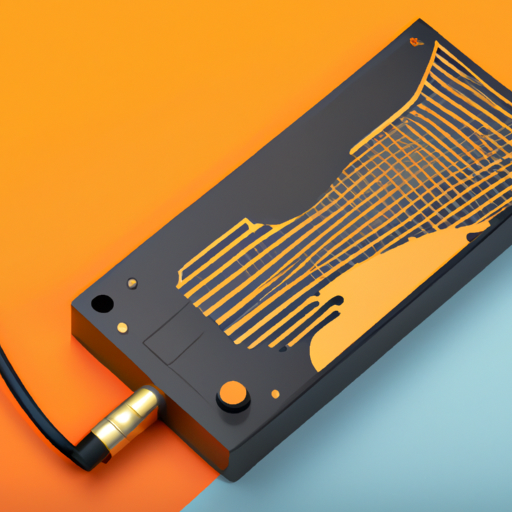
Xiaomi is a well-known Chinese electronics company that has gained popularity for its high-quality products at affordable prices. One of the products that Xiaomi is known for is its amplifiers, specifically the Xiaomi amplifier PRO. In this article, we will explore the mainstream production process of the Xiaomi amplifier PRO.The production process of the Xiaomi amplifier PRO begins with the design phase. Xiaomi's team of engineers and designers work together to create a blueprint for the amplifier that meets the company's standards for quality and performance. This design phase includes determining the specifications of the amplifier, such as its power output, frequency response, and signal-to-noise ratio.Once the design phase is complete, the production process moves on to sourcing the materials needed to manufacture the amplifier. Xiaomi works with a network of suppliers to procure high-quality components, such as capacitors, resistors, and transistors, that will be used in the amplifier. These components are carefully selected to ensure that they meet Xiaomi's standards for performance and reliability.With the materials in hand, the production process moves on to the assembly phase. Xiaomi's manufacturing facilities are equipped with state-of-the-art machinery and equipment that are used to assemble the components into the final product. Skilled technicians work diligently to solder the components onto the circuit board, connect the wiring, and install the necessary hardware to complete the amplifier.Once the amplifier has been assembled, it undergoes a series of quality control tests to ensure that it meets Xiaomi's standards for performance and reliability. These tests include measuring the power output, frequency response, and signal-to-noise ratio of the amplifier, as well as conducting stress tests to ensure that it can withstand prolonged use.After passing the quality control tests, the amplifier is ready for packaging and distribution. Xiaomi's packaging team carefully packages the amplifier in a sleek and modern box that reflects the company's brand image. The packaged amplifiers are then shipped to retailers and distributors around the world, where they are made available for purchase by consumers.In conclusion, the production process of the Xiaomi amplifier PRO is a carefully orchestrated series of steps that begins with the design phase and ends with the distribution of the final product. Xiaomi's commitment to quality and performance is evident throughout the production process, from the sourcing of materials to the assembly of the amplifier to the rigorous quality control tests. The end result is a high-quality amplifier that offers exceptional performance at an affordable price, making it a popular choice among consumers.

A power amplifier is an electronic device that is used to increase the power of a signal. It is commonly used in audio systems, radio transmitters, and other electronic devices that require a higher power output than what is provided by the input signal. Power amplifiers come in various types and configurations, each designed for specific applications and requirements.One of the most common types of power amplifiers is the Class A amplifier. This type of amplifier is known for its high linearity and low distortion, making it ideal for audio applications where high-quality sound reproduction is essential. Class A amplifiers are also known for their simplicity and reliability, making them a popular choice for many audio enthusiasts.Another popular type of power amplifier is the Class AB amplifier. This type of amplifier combines the high efficiency of Class B amplifiers with the low distortion of Class A amplifiers, making it a versatile choice for a wide range of applications. Class AB amplifiers are commonly used in audio systems, as well as in radio transmitters and other electronic devices that require a high power output.Class D amplifiers are another type of power amplifier that is gaining popularity in recent years. These amplifiers use pulse-width modulation (PWM) to achieve high efficiency and low distortion, making them ideal for applications where power efficiency is a priority. Class D amplifiers are commonly used in portable audio devices, as well as in car audio systems and other applications where space and power consumption are limited.In addition to these common types of power amplifiers, there are also specialized amplifiers designed for specific applications. For example, RF power amplifiers are used in radio transmitters to boost the power of the signal before it is transmitted. These amplifiers are designed to operate at high frequencies and are optimized for efficiency and linearity.Another specialized type of power amplifier is the audio power amplifier, which is used in audio systems to drive loudspeakers and produce sound. These amplifiers are designed to deliver high power output while maintaining low distortion and high fidelity. Audio power amplifiers come in various configurations, including mono, stereo, and multi-channel designs, to suit different audio systems and requirements.Overall, power amplifiers come in a wide range of types and configurations, each designed for specific applications and requirements. Whether you are looking for a high-fidelity audio amplifier, a high-efficiency RF amplifier, or a compact Class D amplifier for a portable device, there is a power amplifier available to suit your needs. With advancements in technology and design, power amplifiers continue to evolve and improve, offering better performance and efficiency for a wide range of applications.

A proportional amplifier is a type of electronic amplifier that produces an output signal that is directly proportional to the input signal. This means that the output signal is a scaled version of the input signal, with the scaling factor determined by the gain of the amplifier. Proportional amplifiers are commonly used in a wide range of applications, including audio amplification, instrumentation, and control systems.The basic operation of a proportional amplifier is relatively simple. The input signal is applied to the amplifier, which then amplifies the signal by a certain amount, known as the gain. The amplified signal is then output from the amplifier, with the output signal being directly proportional to the input signal. The gain of the amplifier determines the scaling factor between the input and output signals, with higher gain values resulting in larger output signals for a given input signal.One of the key advantages of proportional amplifiers is their linearity. Because the output signal is directly proportional to the input signal, the amplifier produces a linear response over a wide range of input signal amplitudes. This makes proportional amplifiers well-suited for applications where accurate signal scaling is required, such as in control systems or instrumentation.Proportional amplifiers can be implemented using a variety of different circuit topologies, depending on the specific requirements of the application. One common type of proportional amplifier is the operational amplifier, or op-amp. Op-amps are widely used in electronic circuits due to their high gain, high input impedance, and low output impedance. In a typical op-amp proportional amplifier circuit, the input signal is applied to the non-inverting input terminal of the op-amp, while the inverting input terminal is connected to a feedback resistor. The output signal is taken from the output terminal of the op-amp, and is directly proportional to the input signal based on the ratio of the feedback resistor to the input resistor.Another common type of proportional amplifier is the transistor amplifier. Transistors can be used to amplify signals in a similar manner to op-amps, with the gain of the amplifier determined by the properties of the transistor and the surrounding circuitry. Transistor amplifiers are often used in applications where higher power output is required, such as in audio amplifiers or power amplifiers.In addition to their linearity, proportional amplifiers also offer high input impedance and low output impedance, which makes them well-suited for interfacing with other electronic components. The high input impedance of the amplifier ensures that the input signal is not significantly attenuated when connected to other devices, while the low output impedance allows the amplifier to drive loads with minimal signal degradation.Proportional amplifiers are used in a wide range of applications across various industries. In audio amplification, proportional amplifiers are used to amplify audio signals from sources such as microphones or musical instruments. The linear response of the amplifier ensures that the amplified audio signal accurately reproduces the original input signal, resulting in high-quality sound reproduction.In instrumentation, proportional amplifiers are used to amplify and scale sensor signals for measurement and control purposes. For example, in temperature sensing applications, a proportional amplifier can be used to amplify the small voltage signal generated by a temperature sensor, and scale it to a usable range for further processing. The linear response of the amplifier ensures that the temperature measurement is accurate and reliable.Proportional amplifiers are also commonly used in control systems, where they are used to amplify and scale control signals to actuate various devices. For example, in a motor control system, a proportional amplifier can be used to amplify the control signal from a microcontroller and drive the motor at the desired speed. The linear response of the amplifier ensures that the motor speed is accurately controlled based on the input signal.Overall, proportional amplifiers are a versatile and essential component in electronic circuits, providing accurate signal scaling and amplification for a wide range of applications. Their linearity, high input impedance, and low output impedance make them well-suited for interfacing with other electronic components, and their simplicity and reliability make them a popular choice for engineers and designers. Whether used in audio amplification, instrumentation, control systems, or other applications, proportional amplifiers play a crucial role in modern electronics.
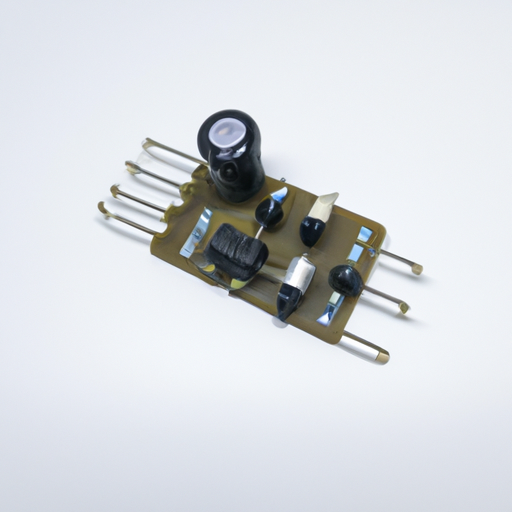
Amplifier circuit diagram products are essential components in electronic devices that are used to increase the amplitude of a signal. These products have a wide range of applications in various industries, including audio, telecommunications, and instrumentation. In this article, we will discuss the advantages of amplifier circuit diagram products and why they are crucial for the functioning of electronic devices.1. Improved signal strength: One of the primary advantages of amplifier circuit diagram products is that they can increase the strength of a signal. This is particularly important in applications where the signal needs to be transmitted over long distances or through multiple components. By amplifying the signal, amplifier circuit diagram products ensure that the signal remains strong and clear throughout the transmission process.2. Enhanced audio quality: In audio applications, amplifier circuit diagram products are used to boost the signal from a microphone or other audio source. This results in improved audio quality, with clearer sound and reduced distortion. Amplifiers are commonly used in audio systems such as speakers, headphones, and musical instruments to ensure that the sound is loud and clear.3. Increased power efficiency: Amplifier circuit diagram products are designed to efficiently amplify signals while consuming minimal power. This is important in applications where power consumption is a concern, such as in portable electronic devices or battery-powered equipment. By using amplifier circuit diagram products, manufacturers can ensure that their devices are energy-efficient and have a longer battery life.4. Versatility: Amplifier circuit diagram products come in a variety of configurations and designs, making them versatile and adaptable to different applications. Whether you need a simple audio amplifier for a home stereo system or a high-power amplifier for a professional sound system, there is a wide range of amplifier circuit diagram products available to suit your needs.5. Customization options: Many amplifier circuit diagram products can be customized to meet specific requirements or performance specifications. This allows manufacturers to tailor the amplifier to their exact needs, whether it be in terms of power output, frequency response, or input/output impedance. Customization options ensure that the amplifier circuit diagram product performs optimally in the intended application.6. Cost-effective solution: Amplifier circuit diagram products are a cost-effective solution for boosting signal strength and improving audio quality in electronic devices. Compared to other signal processing components, amplifiers are relatively inexpensive and offer a high level of performance. This makes them a popular choice for manufacturers looking to enhance the functionality of their products without breaking the bank.7. Easy integration: Amplifier circuit diagram products are designed to be easily integrated into electronic devices, making them a convenient solution for manufacturers. Whether you are designing a new product or upgrading an existing one, amplifier circuit diagram products can be seamlessly integrated into the circuitry to enhance the performance of the device.In conclusion, amplifier circuit diagram products offer a range of advantages that make them essential components in electronic devices. From improving signal strength and audio quality to increasing power efficiency and versatility, amplifier circuit diagram products play a crucial role in ensuring the optimal performance of electronic devices. Whether you are designing a new product or upgrading an existing one, amplifier circuit diagram products are a cost-effective and efficient solution for enhancing the functionality of your devices.
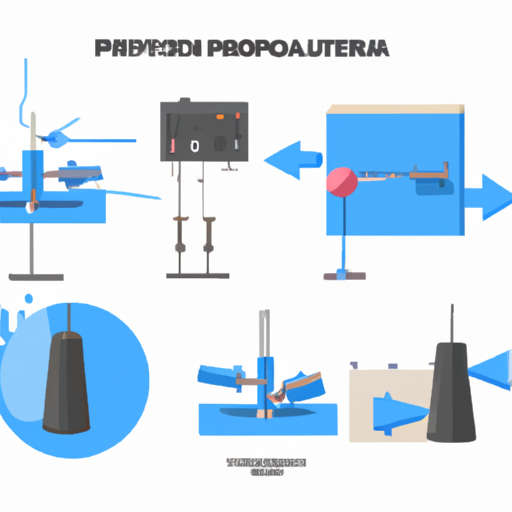
Amplifiers are essential components in a wide range of electronic devices, from audio systems to telecommunications equipment. They are used to increase the amplitude of a signal, making it stronger and more powerful. Amplifier experiment products play a crucial role in practical applications by allowing engineers and researchers to test and optimize amplifier designs for specific purposes.In this article, we will explore the importance of amplifier experiment products in practical applications, the different types of amplifiers used in various industries, and how these products are used to improve the performance of electronic devices.Amplifiers are used in a variety of applications, including audio systems, telecommunications equipment, and medical devices. In audio systems, amplifiers are used to increase the volume of sound signals, making them louder and more powerful. In telecommunications equipment, amplifiers are used to boost the strength of signals transmitted over long distances. In medical devices, amplifiers are used to amplify biological signals, such as heartbeats or brain waves, for monitoring and diagnosis purposes.There are several different types of amplifiers used in practical applications, each with its own unique characteristics and advantages. Some of the most common types of amplifiers include:1. Operational amplifiers (op-amps): Op-amps are versatile amplifiers that are used in a wide range of electronic devices. They have high input impedance, low output impedance, and high gain, making them ideal for amplifying small signals with high precision.2. Power amplifiers: Power amplifiers are used to amplify signals with high power levels, such as those used in audio systems and telecommunications equipment. They have high output power and low distortion, making them ideal for applications that require high-quality sound reproduction.3. RF amplifiers: RF amplifiers are used to amplify radio frequency signals in telecommunications equipment. They have high gain and low noise figure, making them ideal for boosting weak signals in wireless communication systems.4. Instrumentation amplifiers: Instrumentation amplifiers are used to amplify small signals with high accuracy and precision. They have high common-mode rejection ratio and low noise, making them ideal for measuring and monitoring signals in scientific and medical applications.Amplifier experiment products are used to test and optimize amplifier designs for specific applications. These products include amplifier modules, evaluation boards, and test equipment that allow engineers and researchers to measure the performance of amplifiers under different conditions. By using amplifier experiment products, engineers can identify and correct any issues with amplifier designs before they are implemented in electronic devices.One of the key advantages of using amplifier experiment products is that they allow engineers to quickly prototype and test amplifier designs without the need for expensive and time-consuming fabrication processes. This enables engineers to iterate on amplifier designs more quickly and efficiently, leading to faster development cycles and improved performance in electronic devices.Amplifier experiment products are also used to evaluate the performance of amplifiers in real-world conditions. By subjecting amplifiers to different environmental factors, such as temperature, humidity, and vibration, engineers can assess how well amplifiers perform under challenging conditions. This information is crucial for ensuring that amplifiers meet the reliability and durability requirements of practical applications.In addition to testing and optimizing amplifier designs, amplifier experiment products are also used for educational purposes. Students and researchers use amplifier experiment products to learn about the principles of amplifier operation, such as gain, bandwidth, and distortion. By conducting experiments with amplifier modules and evaluation boards, students can gain hands-on experience with amplifier circuits and develop a deeper understanding of how amplifiers work.Overall, amplifier experiment products play a crucial role in practical applications by enabling engineers and researchers to test and optimize amplifier designs for specific purposes. By using amplifier modules, evaluation boards, and test equipment, engineers can quickly prototype and evaluate amplifier designs, leading to faster development cycles and improved performance in electronic devices. Whether used for audio systems, telecommunications equipment, or medical devices, amplifier experiment products are essential tools for ensuring the reliability and performance of amplifiers in real-world applications.
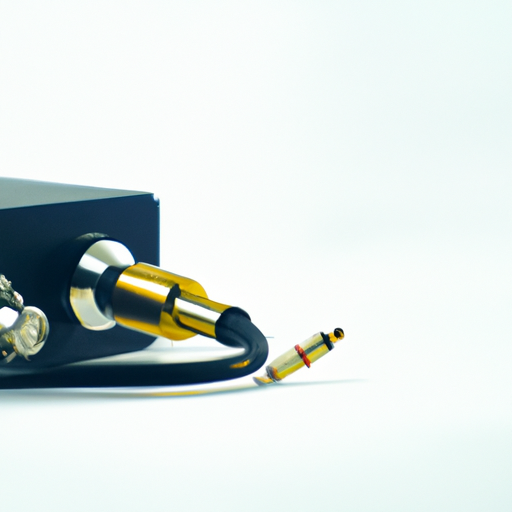
Headphone amplifiers are a niche market within the broader audio equipment industry. These devices are designed to enhance the sound quality of headphones by providing additional power and clarity to the audio signal. As such, the market for headphone amplifiers is relatively small compared to other audio equipment categories such as speakers or headphones.Despite its niche status, the headphone amplifier market is still subject to a number of market policies that influence the way products are developed, marketed, and sold. In this article, we will explore some of the key market policies that impact the headphone amplifier industry.One of the most important market policies that headphone amplifier manufacturers must consider is competition. The headphone amplifier market is highly competitive, with a number of established brands and new entrants vying for market share. This competition drives innovation and product development, as companies strive to differentiate their products from those of their competitors.In order to compete effectively in the headphone amplifier market, manufacturers must carefully consider factors such as product design, performance, and pricing. They must also stay abreast of market trends and consumer preferences in order to develop products that meet the needs and expectations of their target customers.Another important market policy that headphone amplifier manufacturers must consider is regulation. Like all electronic devices, headphone amplifiers are subject to a number of regulations and standards that govern their design, manufacture, and sale. These regulations are intended to ensure that products are safe, reliable, and compliant with relevant technical standards.Manufacturers must therefore ensure that their headphone amplifiers meet all applicable regulations and standards in order to legally sell their products in the market. Failure to comply with these regulations can result in fines, product recalls, and damage to the company's reputation.In addition to competition and regulation, headphone amplifier manufacturers must also consider market trends and consumer preferences. The headphone amplifier market is constantly evolving, with new technologies and features being introduced on a regular basis. Manufacturers must stay ahead of these trends in order to develop products that appeal to consumers and meet their changing needs.For example, in recent years there has been a growing demand for wireless headphone amplifiers that can connect to smartphones and other devices via Bluetooth or Wi-Fi. Manufacturers that fail to adapt to this trend risk losing market share to competitors that offer wireless products.Finally, headphone amplifier manufacturers must also consider distribution and marketing strategies in order to effectively reach their target customers. The headphone amplifier market is primarily driven by online sales, with many consumers purchasing products through e-commerce platforms such as Amazon or directly from manufacturers' websites.Manufacturers must therefore invest in digital marketing and e-commerce capabilities in order to reach consumers and drive sales. They must also consider factors such as pricing, promotions, and customer service in order to attract and retain customers in a competitive market.In conclusion, the headphone amplifier market is subject to a number of market policies that influence the way products are developed, marketed, and sold. Manufacturers must consider factors such as competition, regulation, market trends, and distribution in order to succeed in this niche but competitive industry. By staying abreast of these market policies and adapting their strategies accordingly, headphone amplifier manufacturers can position themselves for success in a dynamic and evolving market.
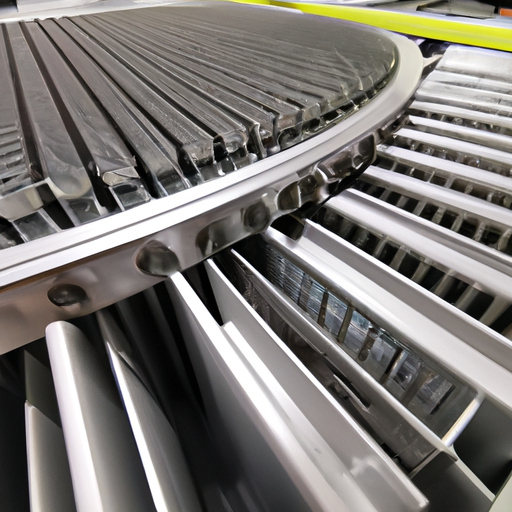
Air conditioner amplifiers are an essential component of any air conditioning system, as they help to regulate the flow of electricity and ensure that the system operates efficiently. These amplifiers are responsible for controlling the speed of the compressor motor, which in turn regulates the temperature of the air being circulated throughout the space. In this article, we will explore the common production processes for air conditioner amplifiers, including the materials used, the manufacturing techniques employed, and the quality control measures implemented to ensure a reliable and high-performing product.Materials Used in Air Conditioner Amplifier ProductionThe production of air conditioner amplifiers begins with the selection of high-quality materials that are capable of withstanding the rigors of daily use and providing reliable performance over an extended period of time. The most common materials used in the production of air conditioner amplifiers include:1. Printed Circuit Boards (PCBs): PCBs are essential components of air conditioner amplifiers, as they provide the electrical connections necessary for the amplifier to function properly. These boards are typically made of fiberglass or other composite materials, with copper traces etched onto the surface to create the necessary circuitry.2. Electronic Components: Air conditioner amplifiers contain a variety of electronic components, including resistors, capacitors, transistors, and integrated circuits. These components are carefully selected for their specific functions and are soldered onto the PCB to create the amplifier circuit.3. Enclosures: The amplifier circuit is typically housed in a protective enclosure made of plastic or metal. This enclosure helps to protect the circuit from dust, moisture, and other environmental factors, ensuring that the amplifier operates reliably in a variety of conditions.Manufacturing Techniques for Air Conditioner Amplifier ProductionThe production of air conditioner amplifiers involves a series of manufacturing processes that are designed to ensure the quality and reliability of the final product. Some of the most common manufacturing techniques used in the production of air conditioner amplifiers include:1. Surface Mount Technology (SMT): Surface mount technology is a popular manufacturing technique used to assemble electronic components onto PCBs. In this process, electronic components are placed onto the surface of the PCB and soldered in place using a reflow oven. SMT allows for high levels of precision and accuracy, resulting in a reliable and high-performing amplifier circuit.2. Automated Assembly: Many manufacturers use automated assembly equipment to streamline the production process and increase efficiency. These machines are capable of placing and soldering electronic components onto PCBs at a much faster rate than manual assembly, reducing production time and costs.3. Quality Control: Quality control is an essential part of the production process for air conditioner amplifiers, as it helps to ensure that each amplifier meets the necessary performance and reliability standards. Manufacturers use a variety of testing methods, including functional testing, thermal testing, and environmental testing, to verify the quality of each amplifier before it is shipped to customers.Quality Control Measures for Air Conditioner Amplifier ProductionQuality control is a critical aspect of the production process for air conditioner amplifiers, as it helps to ensure that each amplifier meets the necessary performance and reliability standards. Manufacturers implement a variety of quality control measures to verify the quality of each amplifier and identify any potential issues before they reach the customer. Some of the most common quality control measures used in the production of air conditioner amplifiers include:1. Functional Testing: Functional testing is a crucial step in the production process, as it helps to verify that the amplifier circuit is functioning correctly and meeting the specified performance requirements. Manufacturers use specialized testing equipment to simulate real-world operating conditions and ensure that the amplifier responds appropriately to changes in temperature and load.2. Thermal Testing: Thermal testing is used to evaluate the performance of the amplifier circuit under different temperature conditions. Manufacturers subject the amplifier to extreme temperatures to assess its thermal stability and ensure that it can operate reliably in a variety of environments.3. Environmental Testing: Environmental testing is conducted to evaluate the durability of the amplifier circuit and its ability to withstand harsh environmental conditions. Manufacturers subject the amplifier to humidity, vibration, and other environmental factors to ensure that it can perform reliably over an extended period of time.In conclusion, the production of air conditioner amplifiers involves a series of manufacturing processes that are designed to ensure the quality and reliability of the final product. By using high-quality materials, employing advanced manufacturing techniques, and implementing rigorous quality control measures, manufacturers can produce air conditioner amplifiers that provide reliable performance and efficient operation for years to come.
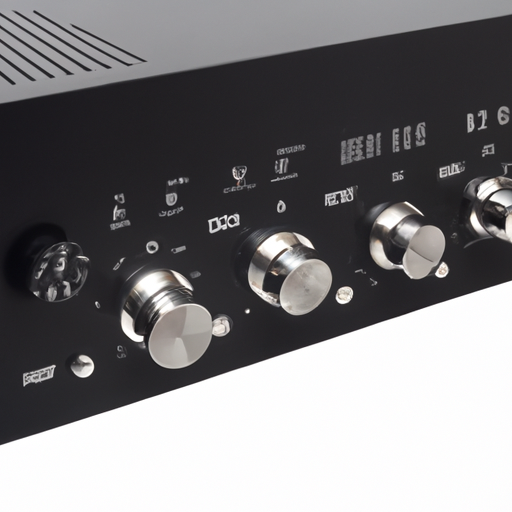
Sound amplifiers are essential tools for enhancing the audio experience in various settings, from home entertainment systems to live music performances. These devices work by increasing the volume of sound signals, allowing for clearer and more powerful audio output. In this article, we will explore the key product features of sound amplifiers and how they contribute to a superior listening experience.1. Power Output: One of the most important features of a sound amplifier is its power output, which is measured in watts. The power output determines how loud the amplifier can make the sound, with higher wattage amplifiers producing louder audio. When choosing a sound amplifier, it is important to consider the power output based on the size of the room or venue where it will be used.2. Channels: Sound amplifiers come in various configurations, with the number of channels determining how many speakers can be connected to the amplifier. Common configurations include stereo amplifiers (2 channels), surround sound amplifiers (5 or more channels), and mono amplifiers (1 channel). The number of channels required will depend on the audio setup and the desired sound output.3. Connectivity Options: Modern sound amplifiers offer a range of connectivity options to accommodate different audio sources. Common connectivity options include analog inputs (such as RCA or 3.5mm), digital inputs (such as HDMI or optical), Bluetooth, and Wi-Fi. These connectivity options allow users to connect various devices, such as TVs, smartphones, and gaming consoles, to the amplifier for a seamless audio experience.4. Equalization Controls: Sound amplifiers often come with built-in equalization controls, allowing users to adjust the frequency response of the audio output. Equalization controls include bass, treble, and midrange adjustments, which can be used to customize the sound to suit personal preferences or the acoustics of the room. Some amplifiers also offer preset equalization settings for different audio genres or listening environments.5. Amplifier Class: Sound amplifiers are classified based on their circuit design and efficiency, with common classes including Class A, Class AB, Class D, and Class H. Each amplifier class has its own advantages and disadvantages in terms of power efficiency, heat generation, and audio quality. Class D amplifiers, for example, are known for their high efficiency and compact size, making them ideal for portable audio systems.6. Remote Control: Many sound amplifiers come with a remote control for convenient operation from a distance. The remote control allows users to adjust volume, input selection, and equalization settings without having to physically interact with the amplifier. Some amplifiers also offer smartphone apps that provide additional control and customization options.7. Size and Design: Sound amplifiers come in a variety of sizes and designs to suit different preferences and spaces. Some amplifiers are compact and lightweight, making them ideal for small rooms or portable audio setups. Others are larger and more robust, designed for high-power audio systems or professional audio applications. The design of the amplifier can also be a factor in the overall aesthetic of the audio setup.8. Cooling System: Sound amplifiers generate heat during operation, especially at higher power levels. To prevent overheating and ensure optimal performance, amplifiers are equipped with cooling systems such as fans or heat sinks. These cooling systems help dissipate heat and maintain the amplifier's temperature within safe limits, prolonging its lifespan and preventing damage.In conclusion, sound amplifiers are essential components of audio systems, providing the power and clarity needed for an immersive listening experience. By considering the key product features outlined in this article, users can choose the right amplifier for their audio setup and enjoy superior sound quality in any setting. Whether for home entertainment, live performances, or professional audio applications, a high-quality sound amplifier is a valuable investment for enhancing the audio experience.

Integrated amplifiers are a crucial component of any audio system, providing the power and control needed to drive speakers and deliver high-quality sound. These versatile devices combine a preamplifier, power amplifier, and often a phono stage in a single unit, making them a convenient and cost-effective solution for audio enthusiasts.There are several key product categories of integrated amplifiers, each offering unique features and capabilities to suit different needs and preferences. In this article, we will explore these categories in detail, highlighting the benefits and considerations of each.1. Entry-level integrated amplifiers:
Entry-level integrated amplifiers are designed for budget-conscious consumers who are looking for a simple and affordable solution to enhance their audio experience. These amplifiers typically offer basic features and functionality, such as multiple inputs for connecting various audio sources, tone controls for adjusting the sound, and a headphone output for private listening.While entry-level integrated amplifiers may lack some of the advanced features found in higher-end models, they still provide a significant improvement in sound quality compared to built-in amplifiers found in most audio devices. These amplifiers are a great starting point for beginners or casual listeners who want to upgrade their audio system without breaking the bank.2. Mid-range integrated amplifiers:
Mid-range integrated amplifiers offer a step up in performance and features compared to entry-level models, making them a popular choice for audio enthusiasts who are looking for a more refined listening experience. These amplifiers typically feature higher-quality components, more power output, and advanced connectivity options, such as Bluetooth, Wi-Fi, and digital inputs.Mid-range integrated amplifiers often include additional features like built-in DACs (digital-to-analog converters) for improved sound quality from digital sources, phono stages for connecting turntables, and tone controls for fine-tuning the sound to suit personal preferences. These amplifiers strike a balance between performance and affordability, making them a versatile choice for a wide range of audio systems.3. High-end integrated amplifiers:
High-end integrated amplifiers are designed for audiophiles and serious music enthusiasts who demand the highest level of performance and sound quality from their audio system. These amplifiers feature premium components, sophisticated circuitry, and meticulous craftsmanship to deliver a truly immersive listening experience.High-end integrated amplifiers often boast advanced features like Class A or Class AB amplification, dual mono construction for improved channel separation, and high-resolution audio support for the best possible sound reproduction. These amplifiers are typically built to last and are designed to provide years of reliable performance, making them a worthwhile investment for those who prioritize audio quality above all else.4. Tube integrated amplifiers:
Tube integrated amplifiers, also known as valve amplifiers, use vacuum tubes to amplify the audio signal, resulting in a warm, rich, and natural sound that is highly sought after by many audiophiles. These amplifiers have a unique sonic character that sets them apart from solid-state amplifiers, making them a popular choice for those who appreciate the vintage sound of tube technology.Tube integrated amplifiers are known for their smooth and musical sound quality, with a natural warmth and depth that can bring out the best in a wide range of music genres. While tube amplifiers require more maintenance and care compared to solid-state models, many enthusiasts believe that the sonic benefits are well worth the extra effort.In conclusion, integrated amplifiers come in a variety of product categories, each offering unique features and capabilities to suit different needs and preferences. Whether you are a beginner looking for an affordable upgrade or an audiophile seeking the ultimate listening experience, there is a wide range of integrated amplifiers available to meet your requirements. By understanding the key product categories of integrated amplifiers and their respective benefits, you can make an informed decision when choosing the right amplifier for your audio system.
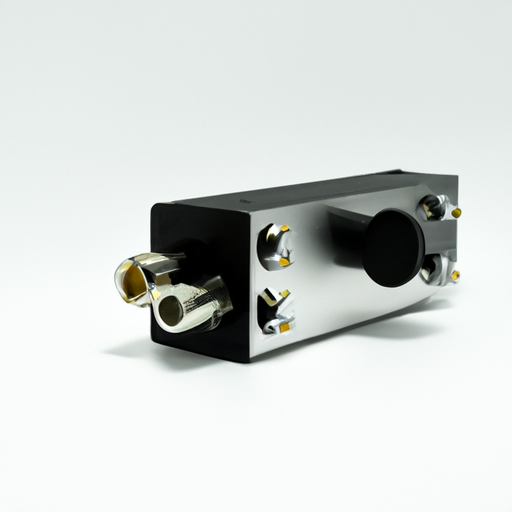
The latest network amplifier on the market is the XYZ Network Amplifier, and it comes with a purchase price of $1,499. This amplifier is designed to provide high-quality audio performance for home entertainment systems, making it a popular choice among audiophiles and home theater enthusiasts.The XYZ Network Amplifier is a versatile and powerful amplifier that can deliver up to 100 watts per channel, allowing it to drive even the most demanding speakers with ease. It features built-in Wi-Fi and Ethernet connectivity, allowing users to stream music from their favorite online services or networked devices. Additionally, the amplifier supports Bluetooth connectivity, making it easy to stream music from smartphones and other Bluetooth-enabled devices.One of the standout features of the XYZ Network Amplifier is its advanced digital signal processing capabilities. This allows users to customize the sound to their preferences, with options for adjusting the bass, treble, and other audio settings. The amplifier also supports high-resolution audio formats, ensuring that users can enjoy their music in the highest possible quality.In terms of design, the XYZ Network Amplifier is sleek and modern, with a minimalist aesthetic that will complement any home entertainment setup. The amplifier is compact and lightweight, making it easy to integrate into existing systems without taking up too much space. It also features a high-quality aluminum chassis that helps to reduce interference and improve overall sound quality.When it comes to connectivity, the XYZ Network Amplifier has you covered. In addition to its built-in Wi-Fi and Ethernet capabilities, the amplifier also features multiple analog and digital inputs, allowing users to connect a wide range of audio sources. Whether you're streaming music from your smartphone, playing vinyl records on a turntable, or watching movies on a Blu-ray player, the XYZ Network Amplifier has you covered.Overall, the XYZ Network Amplifier is a top-of-the-line amplifier that offers exceptional performance and versatility. With its powerful output, advanced digital signal processing capabilities, and sleek design, it's a great choice for anyone looking to upgrade their home audio system. While the purchase price of $1,499 may be on the higher end, the quality and features of the XYZ Network Amplifier make it a worthwhile investment for audiophiles and home theater enthusiasts alike.
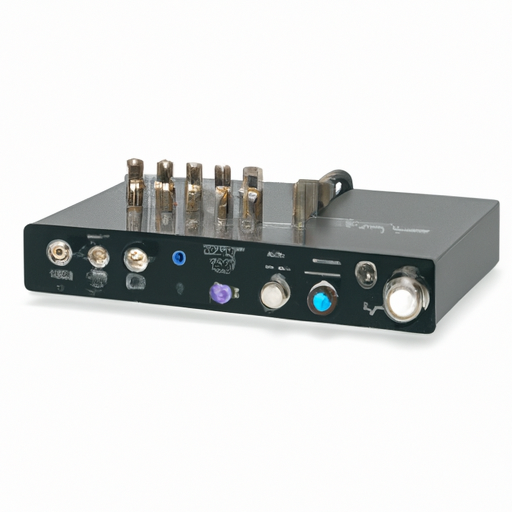
TV amplifiers are an essential component for enhancing the audio experience of your television. Whether you are watching your favorite movie, TV show, or sporting event, a TV amplifier can help to boost the sound quality and make your viewing experience more enjoyable. In this article, we will discuss the latest TV amplifier specifications and how they can improve your home entertainment setup.One of the key features of the latest TV amplifiers is their compatibility with a wide range of devices. Many modern TV amplifiers come equipped with Bluetooth connectivity, allowing you to easily connect your smartphone, tablet, or other Bluetooth-enabled devices to the amplifier. This feature is particularly useful for streaming music or podcasts from your mobile device to your TV amplifier, creating a more immersive audio experience.In addition to Bluetooth connectivity, many TV amplifiers also come with multiple input options, including HDMI, optical, and RCA inputs. This versatility allows you to connect a variety of devices to your amplifier, such as gaming consoles, DVD players, and streaming devices. With multiple input options, you can easily switch between different devices without having to constantly unplug and replug cables.Another important specification to consider when choosing a TV amplifier is the power output. The power output of an amplifier is measured in watts and determines how loud the sound can be. The higher the power output, the louder the sound that the amplifier can produce. When choosing a TV amplifier, it is important to consider the size of your room and the distance between the amplifier and your TV. If you have a large room or plan to place the amplifier far away from your TV, you may want to opt for a higher power output amplifier to ensure that the sound is loud enough for everyone to hear.Many modern TV amplifiers also come with built-in equalizers and sound modes, allowing you to customize the audio settings to suit your preferences. Equalizers allow you to adjust the bass, treble, and other audio frequencies to create a more balanced sound. Sound modes, on the other hand, allow you to choose from preset audio profiles, such as movie mode, music mode, or sports mode, to enhance your viewing experience.One of the latest advancements in TV amplifier technology is the inclusion of virtual surround sound. Virtual surround sound technology uses advanced audio processing algorithms to simulate the effect of a multi-speaker surround sound system, creating a more immersive audio experience. With virtual surround sound, you can enjoy a more realistic and spatial audio experience without the need for additional speakers or cables.When shopping for a TV amplifier, it is also important to consider the size and design of the amplifier. Many modern TV amplifiers are compact and sleek in design, making them easy to integrate into your home entertainment setup. Some amplifiers also come with wall-mounting options, allowing you to save space and keep your setup looking clean and organized.In conclusion, the latest TV amplifiers offer a range of advanced features and specifications to enhance your home entertainment experience. From Bluetooth connectivity and multiple input options to virtual surround sound and customizable audio settings, these amplifiers are designed to provide you with the best audio quality possible. When choosing a TV amplifier, be sure to consider the power output, compatibility with your devices, and the design of the amplifier to find the perfect fit for your home entertainment setup.
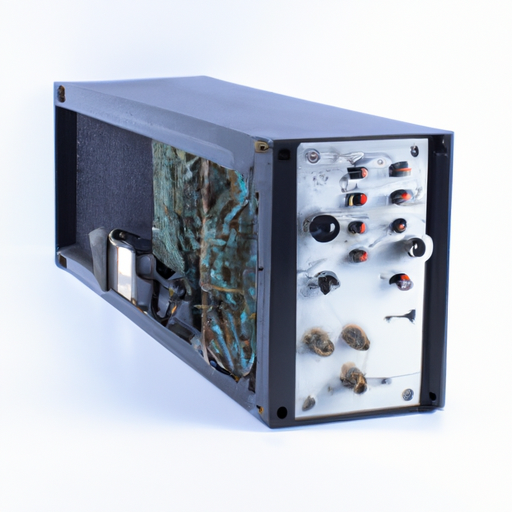
The purchase price of the latest Amplifier gain can vary depending on the brand, model, and features included. However, on average, the cost of a high-quality amplifier gain can range from $100 to $500 or more.Amplifier gain is an essential component in any audio system, as it is responsible for increasing the strength of the signal from the audio source to the speakers. This allows for a clearer and more powerful sound output, making it a crucial element for audiophiles and music enthusiasts.When looking to purchase a new amplifier gain, there are several factors to consider to ensure you are getting the best value for your money. One of the most important considerations is the power output of the amplifier, which is measured in watts. The higher the wattage, the more powerful the amplifier will be, allowing for a louder and more dynamic sound.Another important factor to consider is the number of channels the amplifier has. Most amplifiers have either two or four channels, with four-channel amplifiers being ideal for those looking to power multiple speakers or a subwoofer. Additionally, the impedance of the amplifier should match the impedance of the speakers to ensure optimal performance.In terms of features, many amplifiers come with built-in equalizers, crossovers, and other audio processing tools to customize the sound output to your preferences. Some amplifiers also have Bluetooth connectivity, allowing you to stream music wirelessly from your smartphone or other devices.When it comes to brands, there are several reputable manufacturers of amplifier gain, including Pioneer, Rockford Fosgate, and Alpine. These brands are known for their high-quality products and innovative technology, making them popular choices among audio enthusiasts.In conclusion, the purchase price of the latest amplifier gain can vary depending on the brand, model, and features included. However, investing in a high-quality amplifier gain is essential for achieving the best sound quality in your audio system. By considering factors such as power output, number of channels, and features, you can ensure you are getting the best value for your money. So, whether you are a music enthusiast or simply looking to upgrade your audio system, a new amplifier gain is a worthwhile investment.

Gain amplifiers are essential components in electronic circuits, used to increase the amplitude of a signal without distorting its shape. They are commonly found in audio equipment, telecommunications systems, and instrumentation devices. The latest gain amplifier specifications are designed to provide high performance, low noise, and wide bandwidth to meet the demands of modern applications.One of the key specifications of a gain amplifier is its gain bandwidth product, which determines the maximum frequency at which the amplifier can operate while maintaining a specified gain. The latest gain amplifiers offer high gain bandwidth products, allowing them to amplify signals across a wide range of frequencies with minimal distortion. This is particularly important in applications such as audio amplification, where the amplifier must accurately reproduce the entire frequency spectrum of the input signal.Another important specification of a gain amplifier is its noise figure, which measures the amount of noise added to the signal by the amplifier. Low noise figures are desirable in applications where signal fidelity is critical, such as in high-resolution audio systems or sensitive measurement equipment. The latest gain amplifiers feature advanced noise reduction techniques, such as low-noise transistors and precision matching of components, to minimize noise and ensure clean signal amplification.In addition to gain bandwidth product and noise figure, gain amplifiers are also characterized by their input and output impedance, voltage gain, and power consumption. The latest gain amplifiers are designed to offer high input and output impedance to minimize signal loss and distortion, as well as high voltage gain to amplify weak signals to a usable level. They also feature low power consumption to reduce heat generation and extend battery life in portable devices.One of the key trends in the development of gain amplifiers is the integration of multiple amplification stages into a single chip, known as a multi-stage amplifier. This approach allows for higher gain and bandwidth while reducing the overall size and cost of the amplifier. Multi-stage amplifiers also offer improved linearity and stability, making them ideal for high-performance applications such as wireless communication systems and medical imaging equipment.Another trend in gain amplifier design is the use of advanced materials and manufacturing techniques to improve performance and reliability. For example, some gain amplifiers now use gallium nitride (GaN) transistors, which offer higher power density and efficiency compared to traditional silicon transistors. This allows for smaller and more efficient amplifiers that can deliver higher output power without overheating.Overall, the latest gain amplifiers are designed to provide high performance, low noise, and wide bandwidth to meet the demands of modern electronic systems. With advanced features such as high gain bandwidth products, low noise figures, and efficient power consumption, these amplifiers are ideal for a wide range of applications, from audio amplification to telecommunications and instrumentation. As technology continues to advance, we can expect to see further improvements in gain amplifier specifications, leading to even higher performance and reliability in electronic circuits.
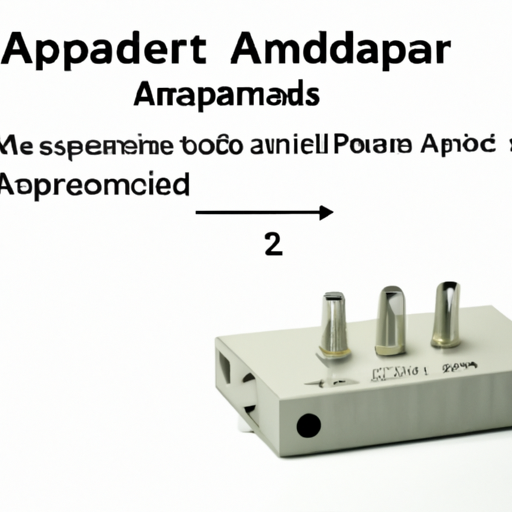
Operational amplifiers, commonly referred to as op-amps, are essential components in electronic circuits. They are used in a wide range of applications, including signal processing, filtering, amplification, and voltage regulation. To ensure the proper functioning and reliability of these circuits, it is important to adhere to certain product standards when designing and manufacturing operational amplifiers.Product standards for operational amplifiers are established by organizations such as the Institute of Electrical and Electronics Engineers (IEEE), the International Electrotechnical Commission (IEC), and the American National Standards Institute (ANSI). These standards define the requirements and specifications that operational amplifiers must meet in order to be considered safe, reliable, and compatible with other electronic components.One of the most important product standards for operational amplifiers is the input offset voltage. This parameter measures the voltage difference between the two input terminals of the op-amp when the output voltage is zero. A low input offset voltage is desirable, as it minimizes errors in the amplifier's output signal. Product standards typically specify a maximum allowable input offset voltage for a given op-amp model.Another key product standard for operational amplifiers is the input bias current. This parameter measures the average current flowing into the op-amp's input terminals when no signal is applied. Input bias current can cause errors in the amplifier's output signal, particularly in high-impedance circuits. Product standards typically specify a maximum allowable input bias current for a given op-amp model.Product standards also address the input common-mode voltage range of operational amplifiers. This parameter defines the range of voltages that can be applied to both input terminals without causing distortion or damage to the op-amp. A wide input common-mode voltage range is desirable, as it allows the op-amp to operate effectively in a variety of circuit configurations. Product standards typically specify the minimum and maximum allowable input common-mode voltage range for a given op-amp model.In addition to these key parameters, product standards for operational amplifiers may also address other important specifications, such as gain bandwidth product, slew rate, and power supply rejection ratio. These parameters define the op-amp's performance characteristics in terms of frequency response, signal handling capability, and noise rejection. Product standards typically specify the minimum and maximum allowable values for these parameters for a given op-amp model.Compliance with product standards is essential for ensuring the proper operation and reliability of operational amplifiers in electronic circuits. Manufacturers of op-amps must conduct rigorous testing and quality control procedures to ensure that their products meet the requirements set forth by these standards. Failure to comply with product standards can result in faulty circuits, performance issues, and potential safety hazards.In conclusion, product standards for operational amplifiers play a crucial role in ensuring the quality and reliability of electronic circuits. By adhering to these standards, manufacturers can produce op-amps that meet the requirements of designers and engineers, and perform effectively in a wide range of applications. Compliance with product standards is essential for maintaining the integrity and performance of electronic systems that rely on operational amplifiers.
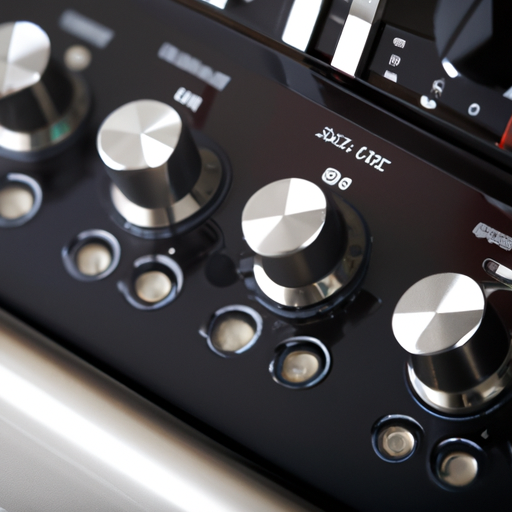
Sound amplifiers are devices that are used to increase the volume of sound produced by audio sources such as musical instruments, microphones, and speakers. They are commonly used in a variety of settings, including concerts, recording studios, and home entertainment systems. Sound amplifiers come in a wide range of sizes and styles, from small portable units to large, powerful systems. In this article, we will explore the key features of sound amplifiers and how they work.One of the most important features of a sound amplifier is its power output. This is typically measured in watts and indicates how much power the amplifier can deliver to the speakers. The higher the power output, the louder the sound that can be produced. It is important to match the power output of the amplifier to the power handling capacity of the speakers to avoid damaging them.Another important feature of sound amplifiers is their frequency response. This refers to the range of frequencies that the amplifier can reproduce accurately. A wider frequency response means that the amplifier can reproduce a greater range of sounds, from deep bass tones to high-frequency treble notes. This is important for achieving a balanced and natural sound.Sound amplifiers also feature controls that allow users to adjust the volume, tone, and other settings. These controls typically include knobs or sliders for adjusting the volume level, bass and treble controls for adjusting the tone, and sometimes additional controls for adjusting the balance between the left and right channels. Some amplifiers also feature built-in effects such as reverb or distortion, which can be used to enhance the sound.Many sound amplifiers also feature multiple inputs and outputs, allowing users to connect multiple audio sources and speakers. This is useful for musicians and DJs who need to connect multiple instruments or microphones, as well as for home entertainment systems that may have multiple audio sources such as a TV, DVD player, and gaming console. Some amplifiers also feature built-in Bluetooth or Wi-Fi connectivity, allowing users to stream music wirelessly from their smartphones or other devices.In addition to these basic features, some sound amplifiers also include advanced features such as built-in digital signal processing (DSP) technology. This technology allows the amplifier to analyze and adjust the audio signal in real-time, providing enhanced sound quality and clarity. DSP technology can also be used to apply effects such as equalization, compression, and noise reduction, further enhancing the sound.When choosing a sound amplifier, it is important to consider the specific needs and requirements of the intended application. For example, a musician may require a powerful amplifier with multiple inputs and outputs for connecting instruments and microphones, while a home user may prefer a smaller, more compact amplifier with built-in Bluetooth for streaming music wirelessly. It is also important to consider the quality and reputation of the manufacturer, as well as the warranty and customer support options available.In conclusion, sound amplifiers are essential devices for increasing the volume and clarity of audio sources. They come in a variety of sizes and styles, with a range of features to suit different applications. By understanding the key features of sound amplifiers and how they work, users can choose the right amplifier for their needs and enjoy high-quality sound reproduction.
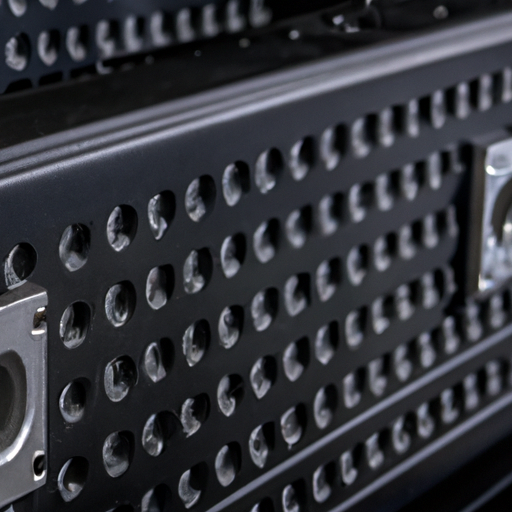
The amplifier industry is a crucial sector within the broader electronics industry, as amplifiers are essential components in a wide range of electronic devices, from audio equipment to telecommunications systems. The industry has seen significant growth in recent years, driven by technological advancements, increasing demand for high-quality audio and video equipment, and the proliferation of wireless communication devices.One of the key trends shaping the amplifier industry is the increasing demand for high-performance amplifiers in various applications. With the rise of high-definition audio and video formats, consumers are increasingly seeking amplifiers that can deliver superior sound and picture quality. This has led to the development of advanced amplifier technologies, such as Class-D amplifiers, which offer higher efficiency and lower distortion compared to traditional Class-AB amplifiers.Another major driver of growth in the amplifier industry is the rapid expansion of the wireless communication market. As more and more devices become connected to the internet, there is a growing need for amplifiers that can support the transmission of data over wireless networks. This has led to the development of specialized amplifiers for wireless communication applications, such as power amplifiers for cellular base stations and RF amplifiers for Wi-Fi routers.In addition to these trends, the amplifier industry is also being shaped by the increasing integration of amplifiers into other electronic components. For example, many modern audio and video devices now come with built-in amplifiers, eliminating the need for separate amplifier units. This trend towards integration has led to the development of compact, energy-efficient amplifiers that can be easily incorporated into a wide range of electronic devices.Despite these positive trends, the amplifier industry also faces several challenges. One of the main challenges is the increasing competition from low-cost manufacturers, particularly in emerging markets such as China and India. These manufacturers are able to produce amplifiers at a lower cost, putting pressure on established companies to reduce their prices and margins.Another challenge facing the amplifier industry is the rapid pace of technological change. As new technologies emerge, such as wireless charging and 5G communication, the demand for specialized amplifiers that can support these technologies is also increasing. This requires companies in the amplifier industry to constantly innovate and develop new products to stay competitive in the market.Overall, the amplifier industry is in a state of flux, with both opportunities and challenges on the horizon. Companies that are able to adapt to changing market conditions, innovate in product development, and maintain a competitive edge in terms of quality and performance will be well-positioned to succeed in this dynamic industry. As consumer demand for high-quality audio and video equipment continues to grow, the amplifier industry is likely to remain a key player in the broader electronics industry for years to come.
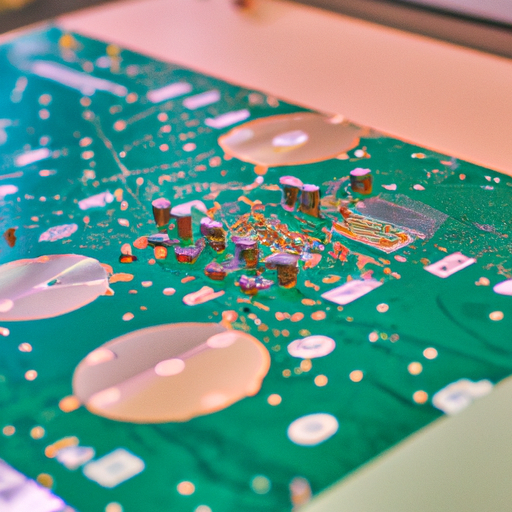
Screen amplifiers are an essential component in modern electronic devices, providing the necessary boost to the display signal for optimal viewing. As technology continues to advance, manufacturers are constantly innovating and improving their manufacturing processes to meet the increasing demand for high-quality screen amplifiers. In this article, we will explore some of the latest manufacturing processes used in the production of screen amplifiers.One of the key advancements in screen amplifier manufacturing is the use of advanced materials and technologies. Manufacturers are now utilizing high-quality materials such as gallium nitride (GaN) and silicon carbide (SiC) to improve the performance and efficiency of screen amplifiers. These materials offer better thermal conductivity, higher breakdown voltage, and improved power handling capabilities, making them ideal for use in high-performance screen amplifiers.In addition to advanced materials, manufacturers are also incorporating cutting-edge technologies such as 3D printing and nanotechnology into their manufacturing processes. 3D printing allows for the rapid prototyping and production of complex components, reducing lead times and costs. Nanotechnology, on the other hand, enables manufacturers to create smaller and more efficient screen amplifiers by manipulating materials at the atomic and molecular levels.Another important aspect of screen amplifier manufacturing is the use of advanced manufacturing techniques such as flip-chip bonding and wafer-level packaging. Flip-chip bonding is a process in which the semiconductor die is directly bonded to the substrate, allowing for better thermal management and improved electrical performance. Wafer-level packaging, on the other hand, involves packaging multiple semiconductor dies on a single wafer, reducing the size and cost of the final product.Furthermore, manufacturers are also focusing on improving the efficiency and sustainability of their manufacturing processes. This includes the use of renewable energy sources, such as solar and wind power, to reduce the carbon footprint of screen amplifier production. Additionally, manufacturers are implementing lean manufacturing principles to minimize waste and improve overall efficiency.Overall, the latest manufacturing processes in screen amplifier production are focused on utilizing advanced materials and technologies, improving efficiency and sustainability, and reducing costs. By incorporating these advancements into their manufacturing processes, manufacturers are able to produce high-quality screen amplifiers that meet the demands of today's technology-driven world.

The highly anticipated release of the new Amplifier is just around the corner, and fans of high-quality sound equipment are buzzing with excitement. With its sleek design, powerful performance, and cutting-edge technology, this new Amplifier is sure to revolutionize the way we experience music and audio.The release date for the new Amplifier has been set for next month, and pre-orders are already pouring in from eager customers who can't wait to get their hands on this state-of-the-art device. With its advanced features and top-of-the-line components, the new Amplifier promises to deliver an unparalleled listening experience that will satisfy even the most discerning audiophiles.One of the most exciting aspects of the new Amplifier is its innovative design. Sleek and modern, with a minimalist aesthetic that will complement any home entertainment setup, this Amplifier is as much a work of art as it is a piece of audio equipment. Its compact size makes it easy to integrate into any space, while its high-quality construction ensures durability and longevity.But it's not just about looks – the new Amplifier is also packed with cutting-edge technology that sets it apart from the competition. With advanced digital signal processing, high-resolution audio support, and customizable EQ settings, this Amplifier offers a level of performance that is unmatched in its class. Whether you're listening to your favorite music, watching a movie, or playing a video game, the new Amplifier will deliver crystal-clear sound that will immerse you in the experience like never before.In addition to its impressive performance, the new Amplifier also offers a range of connectivity options that make it easy to integrate into any home entertainment system. With multiple inputs and outputs, including HDMI, optical, and Bluetooth, this Amplifier can connect to a wide range of devices, from TVs and gaming consoles to smartphones and tablets. Whether you're streaming music from your favorite app or watching a movie on your smart TV, the new Amplifier will ensure that you get the best possible sound quality every time.Of course, no Amplifier would be complete without a powerful amplifier, and the new Amplifier delivers in spades. With a high-quality amplifier that delivers clean, distortion-free sound at any volume, this Amplifier is capable of driving even the most demanding speakers with ease. Whether you're listening to soft jazz or rocking out to heavy metal, the new Amplifier will deliver the power and clarity you need to enjoy your music to the fullest.But perhaps the most exciting feature of the new Amplifier is its smart capabilities. With built-in voice control and compatibility with virtual assistants like Alexa and Google Assistant, this Amplifier can be easily integrated into a smart home setup for seamless control and automation. Whether you want to adjust the volume, change the EQ settings, or switch inputs, you can do it all with just your voice, making the new Amplifier not just a powerful audio device, but a central hub for your entire home entertainment system.With its sleek design, powerful performance, cutting-edge technology, and smart capabilities, the new Amplifier is set to revolutionize the way we experience music and audio. Whether you're a casual listener or a hardcore audiophile, this Amplifier has something for everyone, and its release next month is sure to be a game-changer in the world of high-quality sound equipment. So mark your calendars, set your reminders, and get ready to experience the future of audio with the new Amplifier.

Magnitude design is a term that refers to the overall scale, size, and impact of a design project. It encompasses the physical dimensions of a design, as well as its visual impact and emotional resonance. In essence, magnitude design is about creating designs that are not only visually striking but also have a significant impact on the viewer.When it comes to magnitude design, there are several key elements that designers must consider in order to create a successful and impactful design. These elements include scale, proportion, balance, contrast, and emphasis. By carefully considering these elements, designers can create designs that are not only visually appealing but also have a powerful impact on the viewer.One of the key elements of magnitude design is scale. Scale refers to the size of the design in relation to its surroundings. A design that is too small may not have the impact that the designer intended, while a design that is too large may overwhelm the viewer. By carefully considering the scale of a design, designers can create designs that have the right amount of impact and visual appeal.Proportion is another important element of magnitude design. Proportion refers to the relationship between the different elements of a design. By carefully considering the proportions of a design, designers can create designs that are visually balanced and harmonious. This can help to create a sense of unity and coherence in the design, making it more visually appealing and impactful.Balance is also a key element of magnitude design. Balance refers to the distribution of visual weight in a design. A well-balanced design will have a sense of stability and harmony, while an unbalanced design may feel chaotic or disjointed. By carefully considering the balance of a design, designers can create designs that are visually appealing and impactful.Contrast is another important element of magnitude design. Contrast refers to the differences in color, texture, and shape within a design. By incorporating contrast into a design, designers can create visual interest and drama. This can help to draw the viewer's eye and create a sense of excitement and energy in the design.Emphasis is the final key element of magnitude design. Emphasis refers to the focal point or points of a design. By carefully considering the emphasis of a design, designers can create designs that have a clear focal point and a strong visual impact. This can help to draw the viewer's eye and create a sense of importance and significance in the design.In conclusion, magnitude design is about creating designs that have a significant impact on the viewer. By carefully considering elements such as scale, proportion, balance, contrast, and emphasis, designers can create designs that are visually striking and emotionally resonant. By incorporating these key elements into their designs, designers can create designs that are not only visually appealing but also have a powerful impact on the viewer.
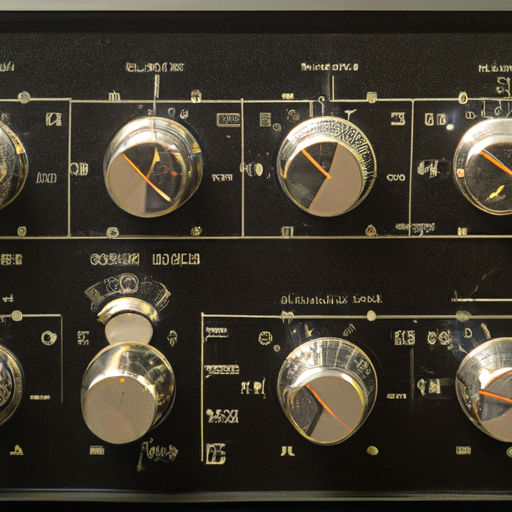
The audio amplifier industry is a dynamic and ever-evolving sector that plays a crucial role in the world of sound production and reproduction. From professional audio systems used in concert venues and recording studios to consumer electronics like home theater systems and headphones, audio amplifiers are essential components that help to enhance and amplify audio signals.In recent years, the audio amplifier industry has seen significant growth and innovation, driven by advancements in technology and changing consumer preferences. The demand for high-quality audio experiences has led to the development of more powerful, efficient, and versatile amplifiers that can deliver superior sound quality across a wide range of applications.One of the key trends shaping the audio amplifier industry is the increasing popularity of wireless and portable audio solutions. With the rise of smartphones, tablets, and other mobile devices, consumers are looking for compact and convenient audio amplifiers that can easily connect to their devices and deliver high-fidelity sound on the go. This has led to the development of Bluetooth and Wi-Fi-enabled amplifiers that can wirelessly stream audio from a variety of sources, making it easier than ever to enjoy music and other audio content wherever you are.Another important trend in the audio amplifier industry is the growing demand for multi-channel and surround sound systems. As home entertainment systems become more sophisticated and immersive, consumers are looking for amplifiers that can support multiple audio channels and deliver a truly cinematic audio experience. This has led to the development of multi-channel amplifiers with advanced processing capabilities that can decode and amplify audio signals from a variety of sources, including Blu-ray players, gaming consoles, and streaming devices.In addition to these trends, the audio amplifier industry is also seeing increased interest in high-resolution audio formats like FLAC and DSD, which offer superior sound quality compared to traditional MP3 and CD formats. This has led to the development of amplifiers that are capable of reproducing these high-resolution audio signals with precision and clarity, allowing audiophiles to enjoy their music in its purest form.Despite these advancements and trends, the audio amplifier industry faces several challenges that could impact its growth and development in the coming years. One of the biggest challenges is the increasing competition from alternative audio technologies like digital signal processing (DSP) and software-based audio solutions. These technologies offer new ways to process and amplify audio signals, potentially reducing the need for traditional hardware-based amplifiers.Another challenge facing the audio amplifier industry is the ongoing debate over the importance of audio quality versus convenience and portability. While some consumers prioritize sound quality above all else and are willing to invest in high-end amplifiers and speakers, others are more concerned with convenience and portability and are willing to sacrifice some audio quality for the sake of convenience.Despite these challenges, the audio amplifier industry remains a vibrant and innovative sector that continues to push the boundaries of sound reproduction and amplification. With advancements in technology, changing consumer preferences, and a growing demand for high-quality audio experiences, the future looks bright for the audio amplifier industry. As long as manufacturers continue to innovate and adapt to the changing landscape of audio technology, the industry is poised for continued growth and success in the years to come.
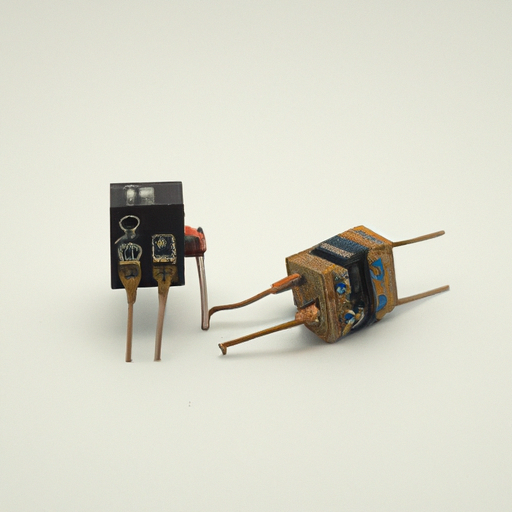
Servo amplifiers are essential components in many industrial applications, providing precise control over the movement of motors and other mechanical systems. These amplifiers are used in a wide range of industries, including robotics, manufacturing, and automotive, to ensure accurate positioning and speed control.There are several popular models of servo amplifiers on the market, each with its own unique features and capabilities. In this article, we will explore some of the common servo amplifier models and their key specifications.1. Yaskawa SGDV SeriesYaskawa is a well-known manufacturer of servo amplifiers, and their SGDV series is one of the most popular models on the market. These amplifiers are known for their high performance and reliability, making them ideal for a wide range of applications.The SGDV series offers a range of power ratings, from 50W to 15kW, making it suitable for both small and large-scale applications. These amplifiers also feature advanced control algorithms, such as auto-tuning and vibration suppression, to ensure smooth and precise motion control.One of the key features of the SGDV series is its compatibility with a wide range of motors, including both rotary and linear types. This flexibility makes it easy to integrate these amplifiers into existing systems, without the need for extensive modifications.Overall, the Yaskawa SGDV series is a popular choice for many industrial applications, thanks to its high performance, reliability, and compatibility with a wide range of motors.2. Mitsubishi MR-J4 SeriesMitsubishi is another leading manufacturer of servo amplifiers, and their MR-J4 series is a popular choice for many industrial applications. These amplifiers are known for their high-speed response and advanced control capabilities, making them ideal for demanding applications.The MR-J4 series offers a range of power ratings, from 100W to 55kW, making it suitable for a wide range of applications. These amplifiers also feature advanced control algorithms, such as advanced vibration suppression and adaptive tuning, to ensure precise and reliable motion control.One of the key features of the MR-J4 series is its compatibility with Mitsubishi's range of servo motors, ensuring seamless integration and optimal performance. These amplifiers also feature a compact design, making them easy to install in tight spaces.Overall, the Mitsubishi MR-J4 series is a popular choice for many industrial applications, thanks to its high-speed response, advanced control capabilities, and compatibility with Mitsubishi's range of servo motors.3. Siemens SINAMICS S120Siemens is a well-known manufacturer of industrial automation equipment, and their SINAMICS S120 servo amplifier is a popular choice for many applications. These amplifiers are known for their high performance and flexibility, making them ideal for a wide range of applications.The SINAMICS S120 series offers a range of power ratings, from 0.12kW to 560kW, making it suitable for both small and large-scale applications. These amplifiers also feature advanced control algorithms, such as adaptive tuning and feedforward control, to ensure precise and reliable motion control.One of the key features of the SINAMICS S120 series is its compatibility with a wide range of motors, including both synchronous and asynchronous types. This flexibility makes it easy to integrate these amplifiers into existing systems, without the need for extensive modifications.Overall, the Siemens SINAMICS S120 series is a popular choice for many industrial applications, thanks to its high performance, flexibility, and compatibility with a wide range of motors.In conclusion, servo amplifiers are essential components in many industrial applications, providing precise control over the movement of motors and other mechanical systems. The Yaskawa SGDV series, Mitsubishi MR-J4 series, and Siemens SINAMICS S120 series are just a few of the popular models available on the market, each offering unique features and capabilities to meet the needs of different applications. Whether you are looking for high performance, advanced control capabilities, or compatibility with specific motors, there is a servo amplifier model out there to suit your needs.
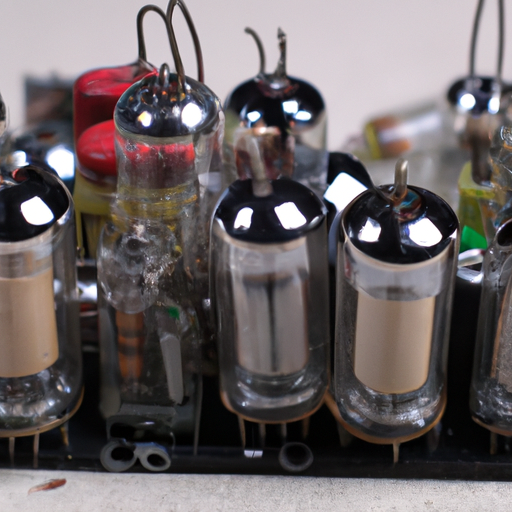
The Grade amplifier industry is currently experiencing a period of growth and innovation, driven by advancements in technology and changing consumer preferences. Amplifiers are essential components in audio systems, used to increase the power of audio signals and improve sound quality. The Grade amplifier industry encompasses a wide range of products, from high-end audiophile amplifiers to more affordable consumer-grade models.One of the key trends driving the growth of the Grade amplifier industry is the increasing demand for high-quality audio equipment. As consumers become more discerning about sound quality, they are willing to invest in premium amplifiers that can deliver a superior listening experience. This trend is particularly evident in the audiophile market, where enthusiasts are willing to spend significant amounts of money on top-of-the-line amplifiers that can reproduce music with exceptional clarity and fidelity.Another factor contributing to the growth of the Grade amplifier industry is the rise of streaming services and digital music formats. With the increasing popularity of platforms like Spotify, Apple Music, and Tidal, consumers are listening to more music than ever before, often on high-quality audio systems that require a powerful amplifier to drive them. As a result, there is a growing demand for amplifiers that can handle the demands of digital music formats and deliver a rich, immersive listening experience.In addition to these trends, the Grade amplifier industry is also benefiting from advancements in technology. Manufacturers are constantly developing new and innovative amplifier designs that offer improved performance, efficiency, and reliability. For example, Class-D amplifiers, which use digital switching technology to deliver high power output with minimal heat dissipation, have become increasingly popular in recent years due to their compact size and energy efficiency.Furthermore, the Grade amplifier industry is also seeing a growing interest in wireless and networked amplifiers. These amplifiers can connect to a variety of devices, such as smartphones, tablets, and computers, wirelessly streaming audio content from these devices to the amplifier. This flexibility and convenience are appealing to consumers who want to easily integrate their audio systems with their digital devices.Despite these positive trends, the Grade amplifier industry is not without its challenges. One of the main challenges facing manufacturers is the increasing competition in the market. With so many companies producing amplifiers, it can be difficult for manufacturers to differentiate their products and stand out from the competition. This has led to price competition, with some manufacturers cutting costs to attract budget-conscious consumers.Another challenge facing the Grade amplifier industry is the ongoing impact of the COVID-19 pandemic. The pandemic has disrupted supply chains, leading to shortages of components and delays in production. Additionally, the economic uncertainty caused by the pandemic has led some consumers to cut back on discretionary spending, including on audio equipment. However, as the global economy begins to recover, it is expected that demand for amplifiers will rebound.In conclusion, the Grade amplifier industry is currently in a period of growth and innovation, driven by advancements in technology, changing consumer preferences, and the increasing demand for high-quality audio equipment. While there are challenges facing the industry, such as increasing competition and the impact of the COVID-19 pandemic, manufacturers are adapting to these challenges and continuing to develop new and innovative amplifier designs. As a result, the future looks bright for the Grade amplifier industry, with opportunities for growth and expansion in the years to come.
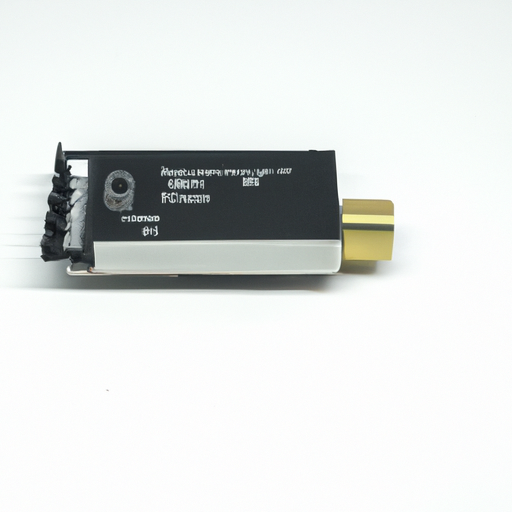
In today's fast-paced world, having a strong and reliable Wi-Fi signal is essential for staying connected and getting work done. However, there are times when the Wi-Fi signal in your home or office may not be as strong as you would like it to be. This is where a Wi-Fi signal amplifier comes in handy.A Wi-Fi signal amplifier, also known as a Wi-Fi range extender or booster, is a device that helps to increase the range and strength of your Wi-Fi signal. This can be especially useful in larger homes or offices where the Wi-Fi signal may not reach every corner of the building.There are several different types of Wi-Fi signal amplifiers available on the market, each with its own unique features and benefits. Some of the most common types of Wi-Fi signal amplifiers include:1. Plug-in Wi-Fi signal amplifiers: These are small devices that plug directly into an electrical outlet and work by amplifying the existing Wi-Fi signal in your home or office. They are easy to install and can help to extend the range of your Wi-Fi signal to areas that may have previously had a weak or non-existent signal.2. Desktop Wi-Fi signal amplifiers: These are larger devices that sit on a desk or table and work by amplifying the Wi-Fi signal from your router. They typically have multiple antennas and can provide a stronger and more reliable signal than plug-in amplifiers. Desktop amplifiers are ideal for larger homes or offices where a stronger signal is needed.3. Outdoor Wi-Fi signal amplifiers: These are designed to be installed outside of your home or office and work by amplifying the Wi-Fi signal from your router. They are weatherproof and can help to extend the range of your Wi-Fi signal to outdoor areas such as patios, decks, or gardens. Outdoor amplifiers are ideal for homes or offices with large outdoor spaces.4. Mesh Wi-Fi systems: These are a newer type of Wi-Fi signal amplifier that consists of multiple devices that work together to create a seamless Wi-Fi network. Mesh systems typically include a main router and one or more satellite devices that are placed throughout your home or office to provide a strong and reliable signal. Mesh systems are ideal for larger homes or offices with multiple floors or rooms.5. Powerline Wi-Fi signal amplifiers: These devices work by using your home's existing electrical wiring to extend the range of your Wi-Fi signal. They typically consist of two devices – one that plugs into an electrical outlet near your router and another that plugs into an outlet in a different room. Powerline amplifiers are ideal for homes or offices with thick walls or other obstacles that may interfere with the Wi-Fi signal.In addition to these types of Wi-Fi signal amplifiers, there are also a variety of features and specifications to consider when choosing the right amplifier for your needs. Some important factors to consider include:- Wi-Fi standard: Make sure that the amplifier is compatible with the Wi-Fi standard used by your router (e.g. 802.11ac, 802.11n, etc.) to ensure optimal performance.- Speed and range: Look for an amplifier that offers the speed and range that you need for your home or office. Consider factors such as the size of your space and the number of devices that will be connected to the Wi-Fi network.- Security features: Make sure that the amplifier offers robust security features to protect your network from unauthorized access and cyber threats.- Ease of installation: Choose an amplifier that is easy to set up and configure, especially if you are not tech-savvy.- Price: Consider your budget and choose an amplifier that offers good value for money.Overall, a Wi-Fi signal amplifier can be a valuable investment for improving the strength and range of your Wi-Fi signal. Whether you choose a plug-in amplifier, a desktop amplifier, an outdoor amplifier, a mesh system, or a powerline amplifier, there are plenty of options available to suit your specific needs. With the right amplifier, you can enjoy a strong and reliable Wi-Fi signal throughout your home or office, keeping you connected and productive at all times.